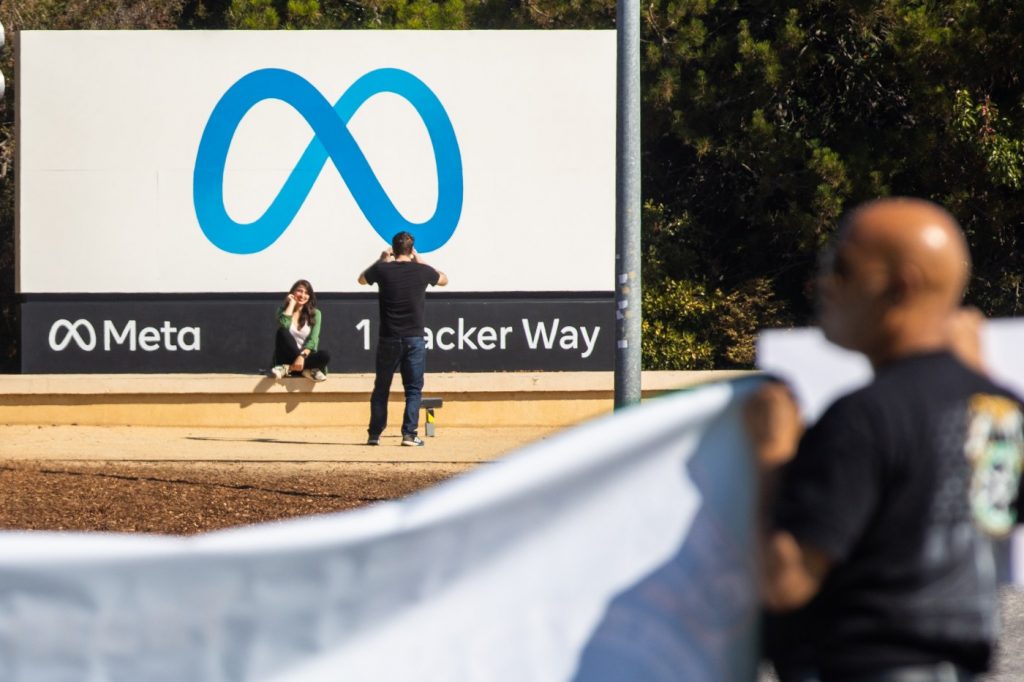The Bay Area’s wobbly tech industry is showing signs of stabilizing after suffering years-long waves of wrenching layoffs unleashed by the sector’s quest for improved efficiency.
While job losses at major companies like Tesla still haunt the region’s tech industry, which is being battered by staffing reductions, plant shutdowns, consolidations and reorganizations, cutbacks are now less severe overall.
During the one-year period that ended in March 2024, the Bay Area lost 36,000 tech jobs, according to a Beacon Economics estimate derived from state employment reports — a decline of 3.9%. In 2023, the 12-month period that ended in December, the Bay Area lost 49,700 tech jobs, a 5.2% decline.
Major companies like Meta, Google and Cisco have laid off workers in the last couple of years.
“The tech layoffs of the past year that followed the tech over-hiring in 2022 and early 2023 have slowed,” said Michael Bernick, an employment attorney with law firm Duane Morris and a former director of the state Employment Development Department.
And the long-term outlook of the region’s economy and technology industry remain healthy, according to Russell Hancock, president of Joint Venture Silicon Valley, a San Jose-based think tank.
“Downsizing isn’t the same as a downturn,” Hancock said. “Despite the layoffs, we still have low unemployment in Silicon Valley and the greater Bay Area, which suggests that people are landing on their feet.”
Plus, some recent high-profile banking implosions haven’t morphed into a doomsday scenario for the local tech sector, as some East Coast pundits predicted.
“The good news here is that the tech job losses didn’t intensify after the collapse of Silicon Valley Bank and First Republic Bank,” said Scott Anderson, chief U.S. Economist for BMO Capital Markets. “After the initial spurt, it has been more of a constant drip, drip, drip. There’s no real end in sight either, though.”
It’s also clear that the tech sector’s decline has been most severe in the San Francisco-San Mateo region, which is seeing the heaviest tech job losses in the Bay Area and is suffering far greater tech employment losses than the South Bay, as shown by this news organization’s analysis of state labor figures compiled by Beacon Economics.
During 2023, the San Francisco-San Mateo region suffered a loss of 26,000 tech jobs — 52% of the 49,700 tech positions the entire Bay Area lost. In contrast, the South Bay lost 20,600 tech jobs or 41.4% of the total for the area. The East Bay, whose dependence on high-tech jobs is much lower than its neighbors to the west and south, lost 2,900 tech jobs, or 5.8% of the total for 2023.
Related Articles
Fearing layoffs amid budget crisis, Oakland’s unions put blame on unpaid business taxes
Tesla chops hundreds more Bay Area jobs as tech industry layoffs widen
Is California’s unemployment rate really 9.5%?
When bees swarm in the Bay Area, who you gonna call? These heroes.
Tesla rehires some Supercharger workers weeks after Elon Musk’s cuts
For some observers, it’s no surprise that the worst tech job losses have hit the San Francisco-San Mateo region especially hard.
San Francisco has been gripped by what some experts describe as an economic “doom loop” spawned by a retail exodus, crime woes, office and hotel foreclosures, and sky-high office vacancy rates that have soared to record levels.
But some experts believe Silicon Valley will be able to ease the pain of tech layoffs to the north.
“People losing jobs in San Francisco or the Peninsula are finding new opportunities in the South Bay,” Hancock said. “Start-up activity and venture investing is fairly robust. Many companies are reducing some divisions while growing others.”
Still, cutbacks have persisted in 2024. Over the first three months of this year, tech companies have slashed 11,000 jobs in the Bay Area. March 2024 is the most recent month for which state labor agency numbers are available, although layoffs have continued since then. Within the last few weeks, Tesla has announced plans to slash more than 3,000 Bay Area jobs.
“The tech industry is not immune from the same negative economic forces that are hovering over the current economy,” Bernick said.
These overall economic woes include high interest rates and budget deficits that haunt federal and state government agencies.
And “conditions for the tech industry will remain challenging as long as interest rates remain as high as they are,” Anderson said.
Still, some experts see reasons to be optimistic about the future of the industry.
“The continuing tech job losses are disappointing, but some hopeful signs are emerging,” said Steve Levy, director of the Palo Alto-based Center for Continuing Study of the California Economy. “Rents on vacant office space are declining, attracting new tenants.”


